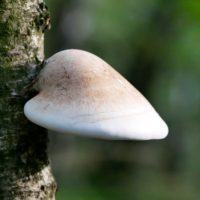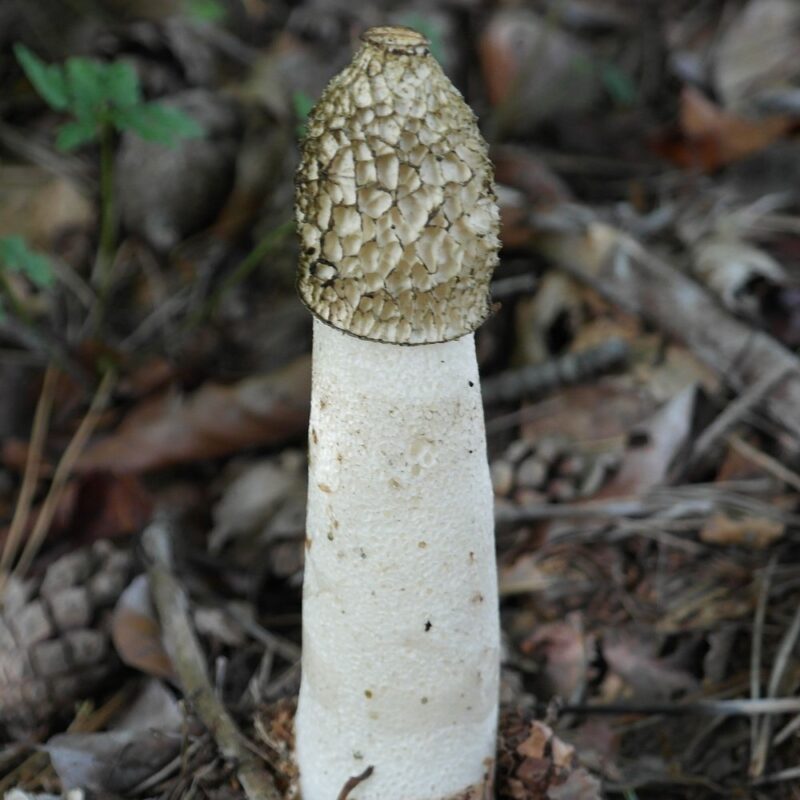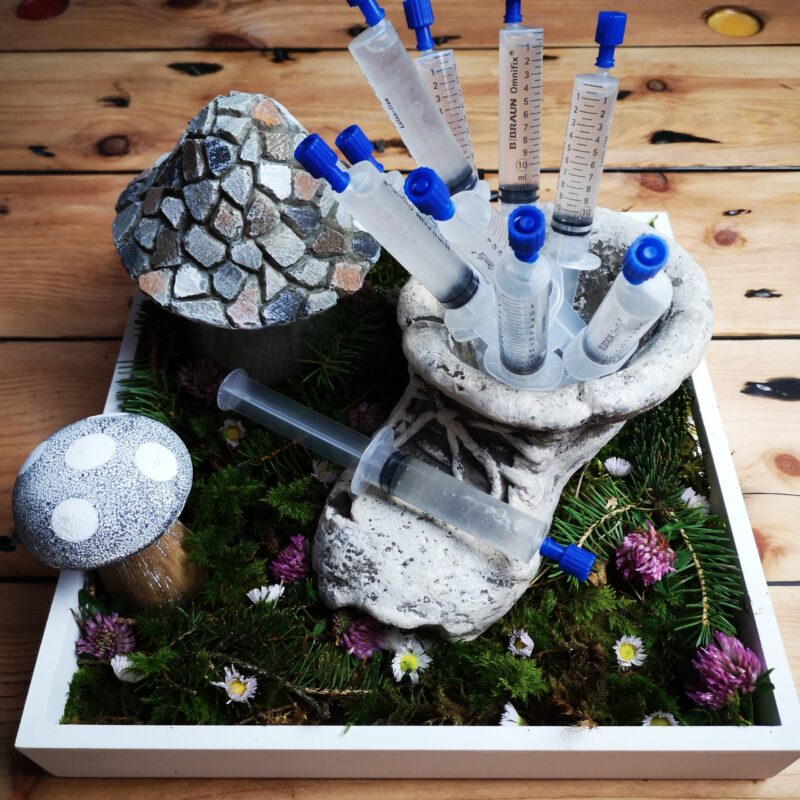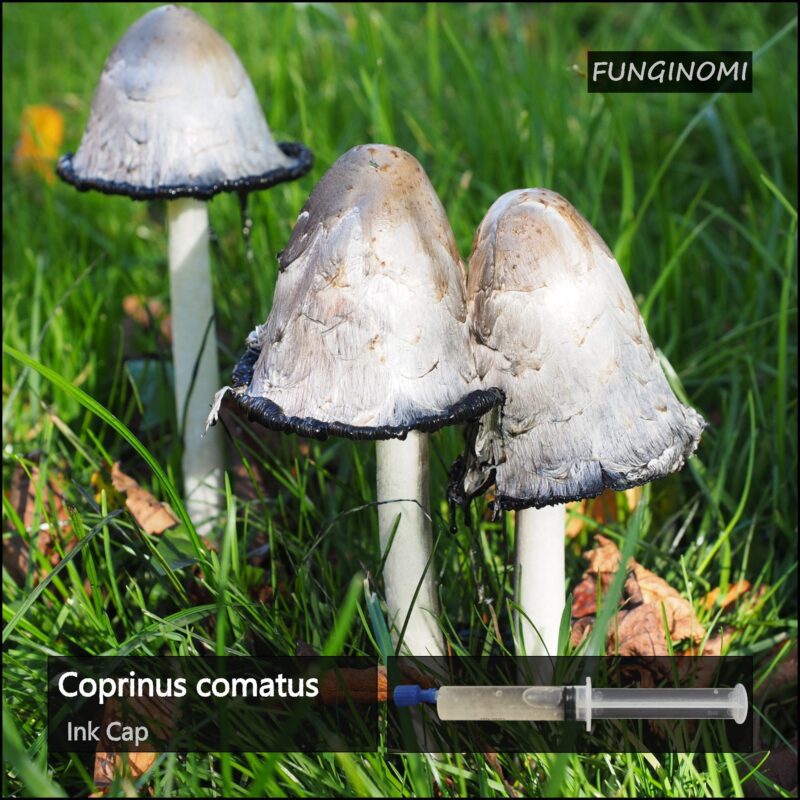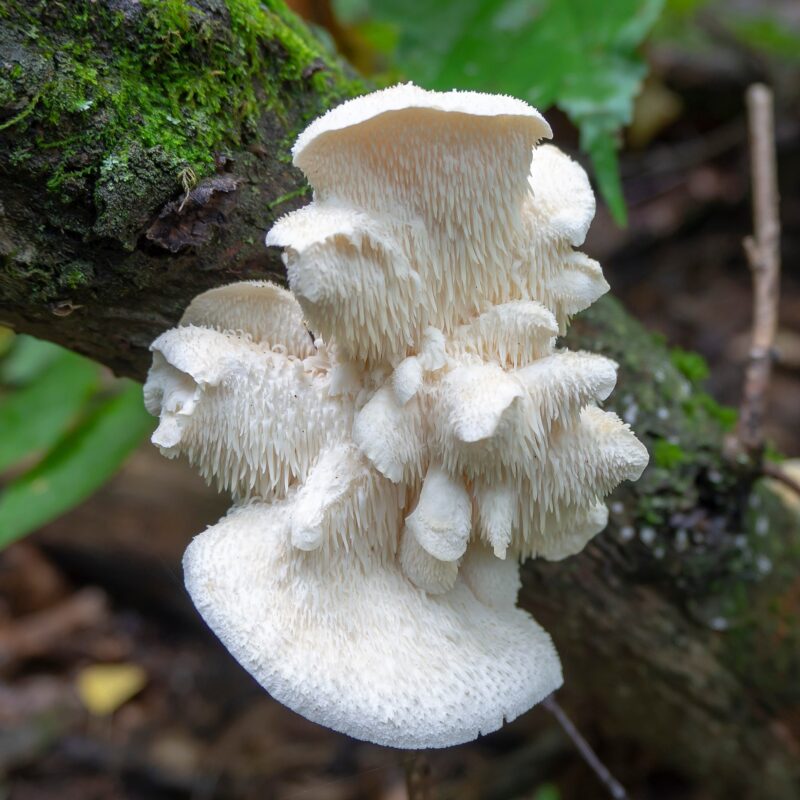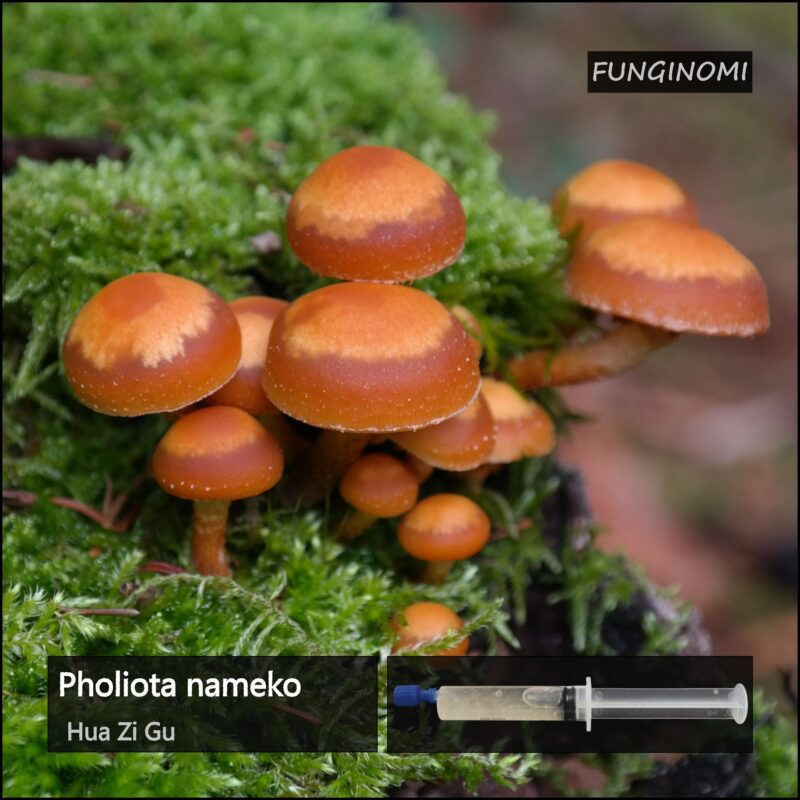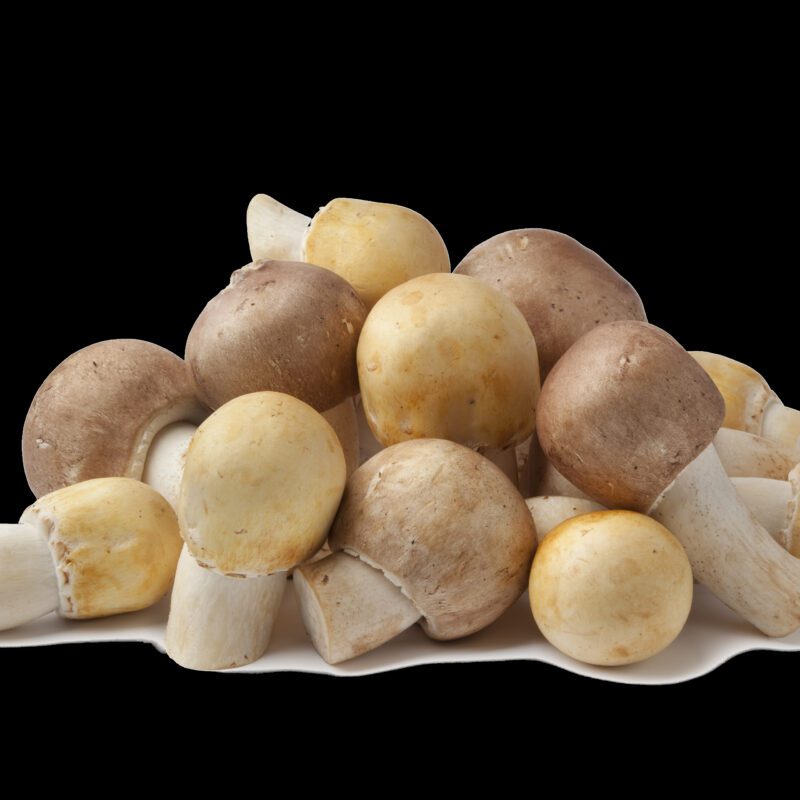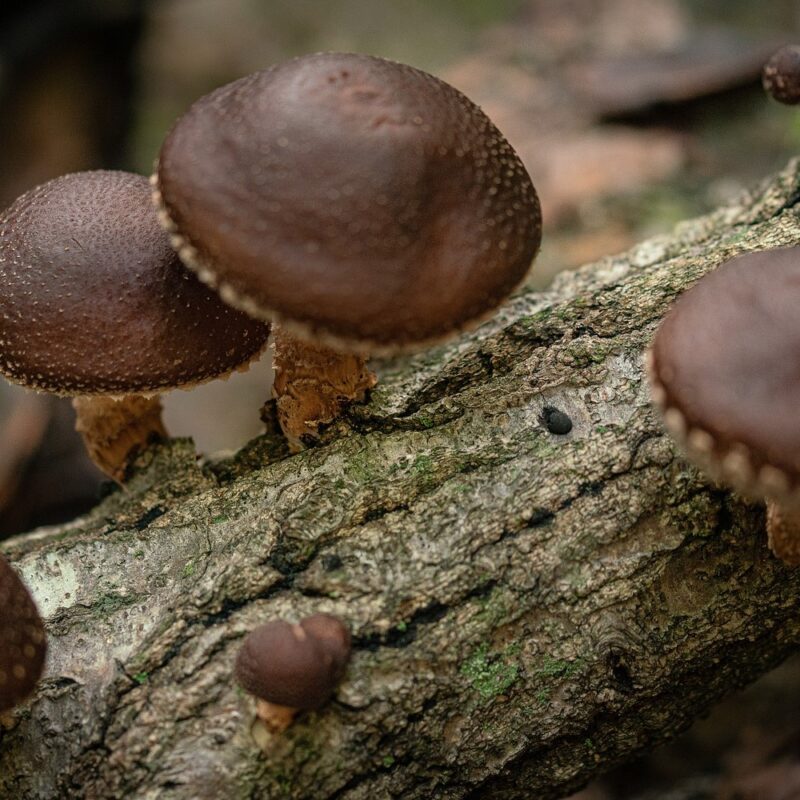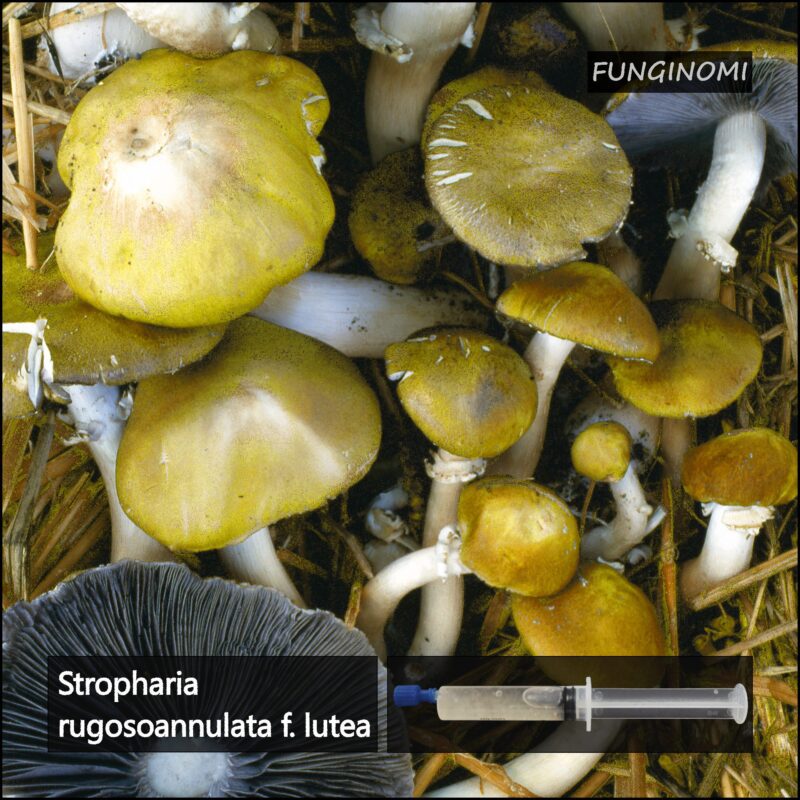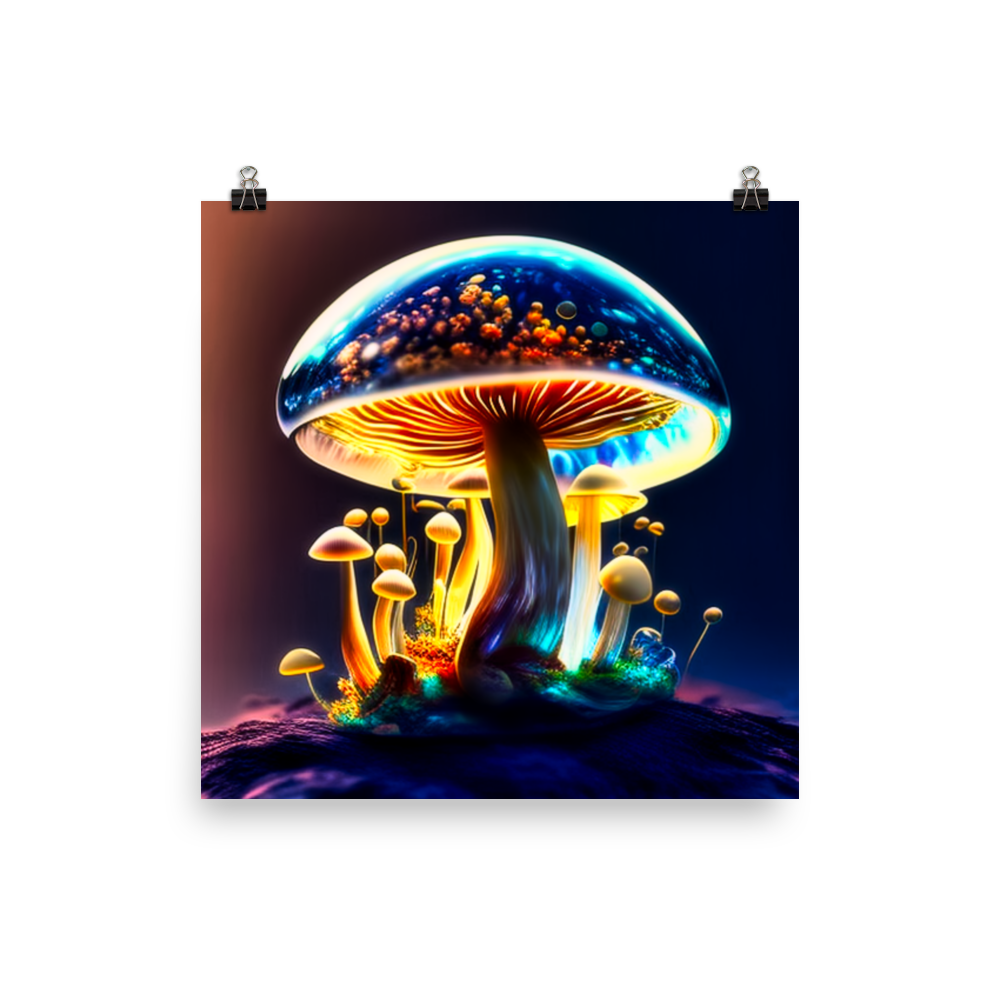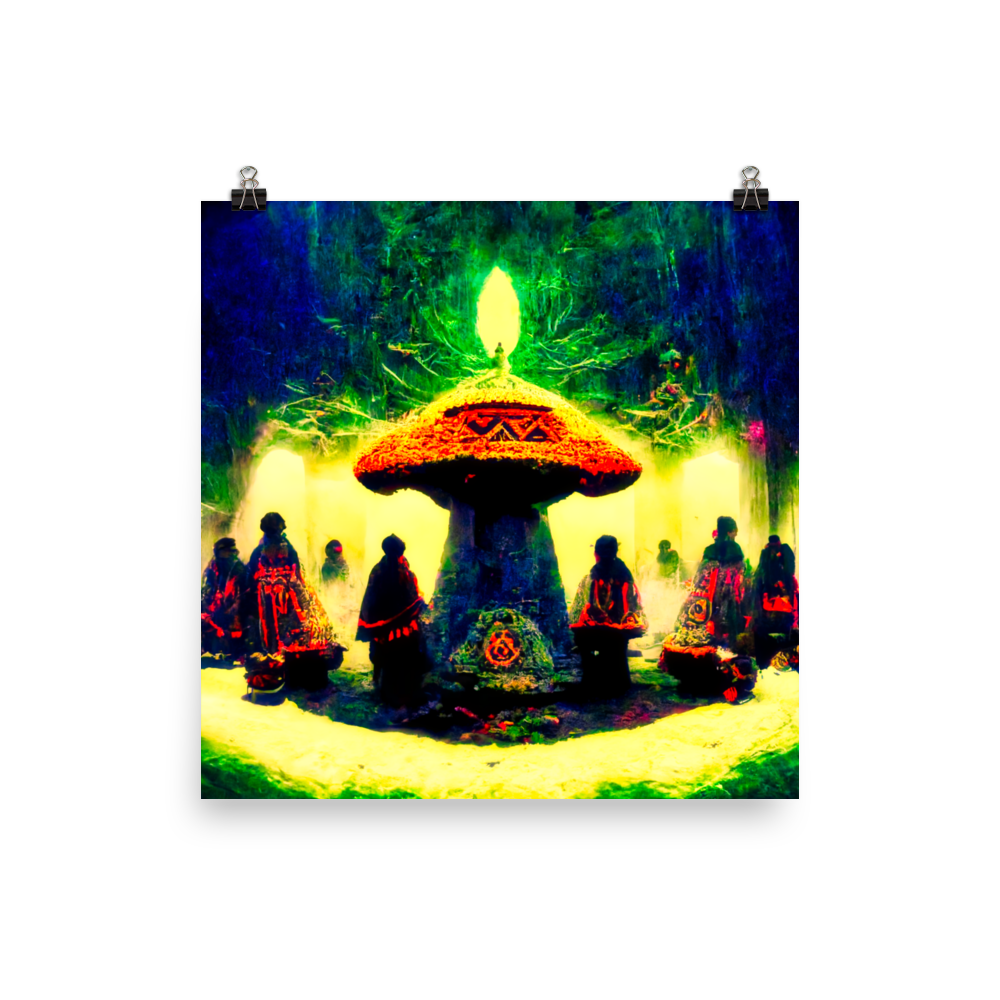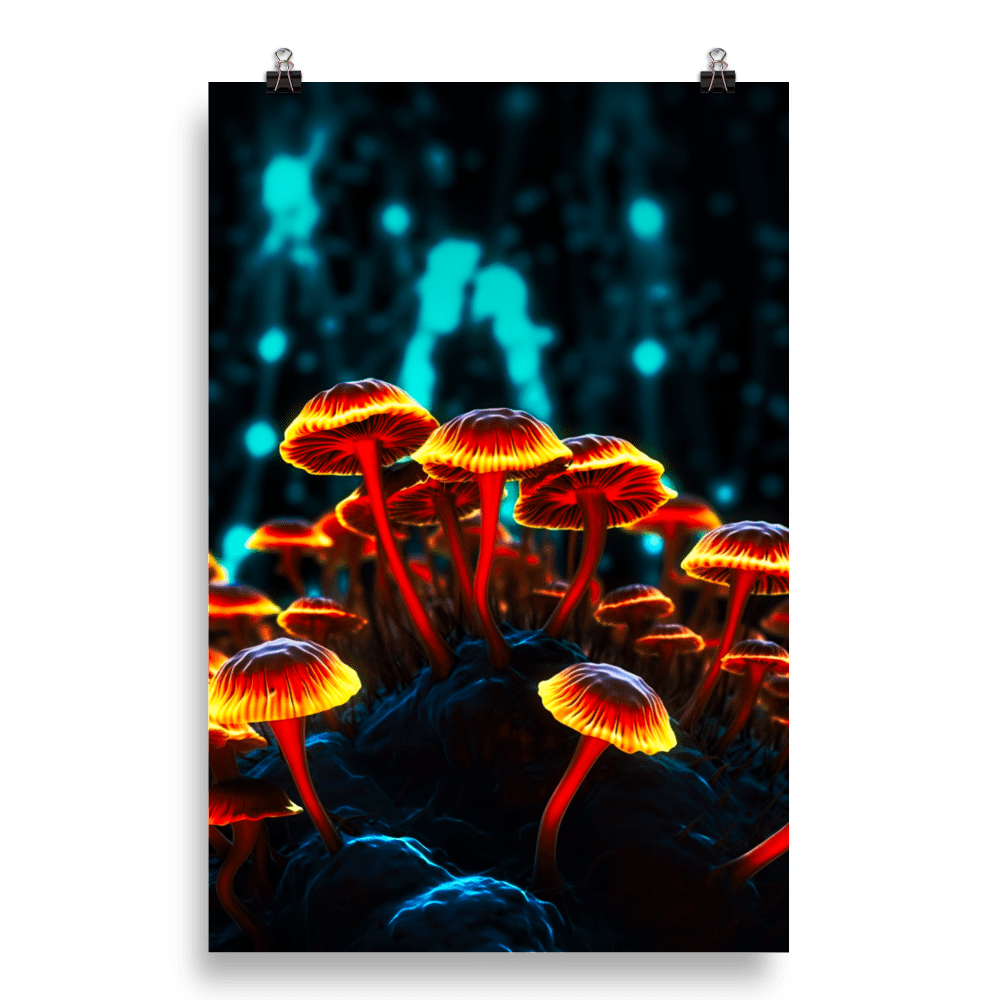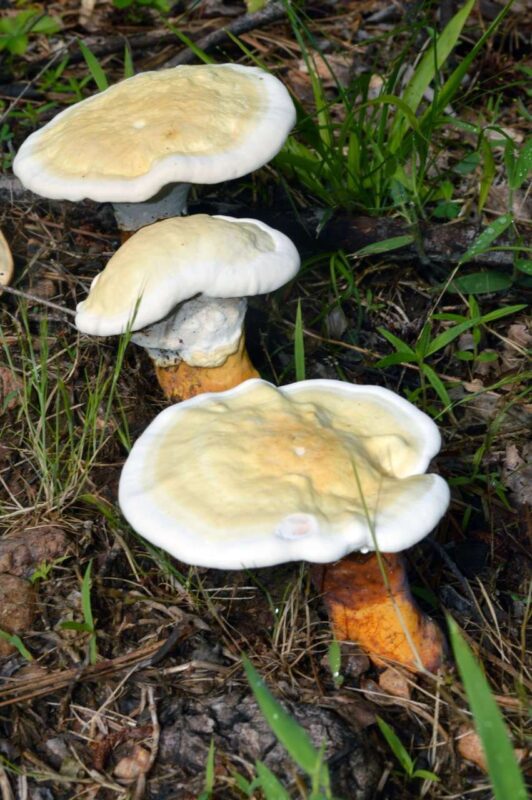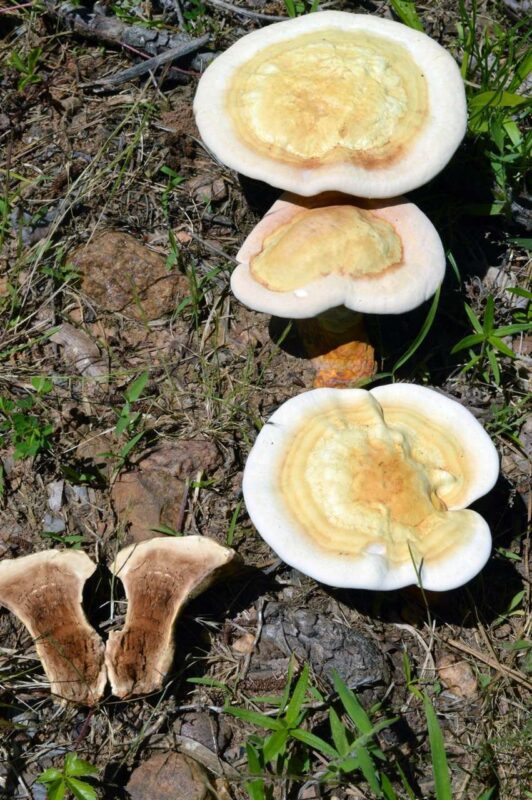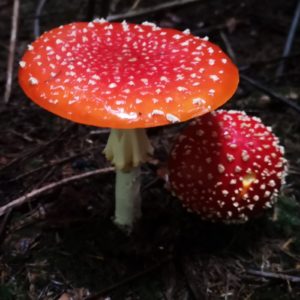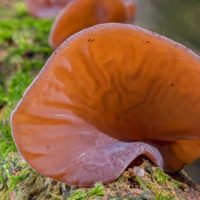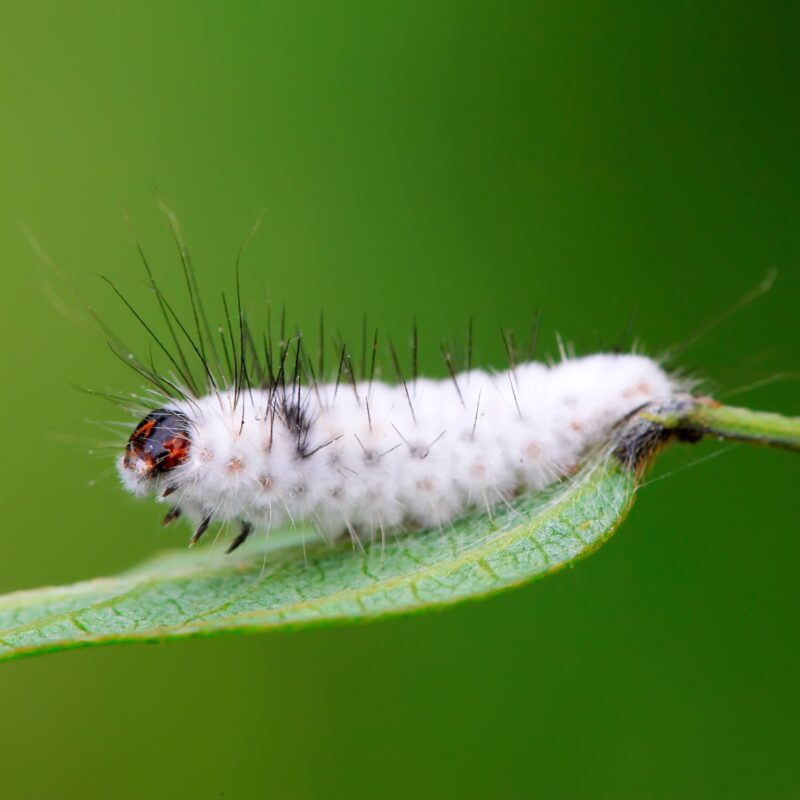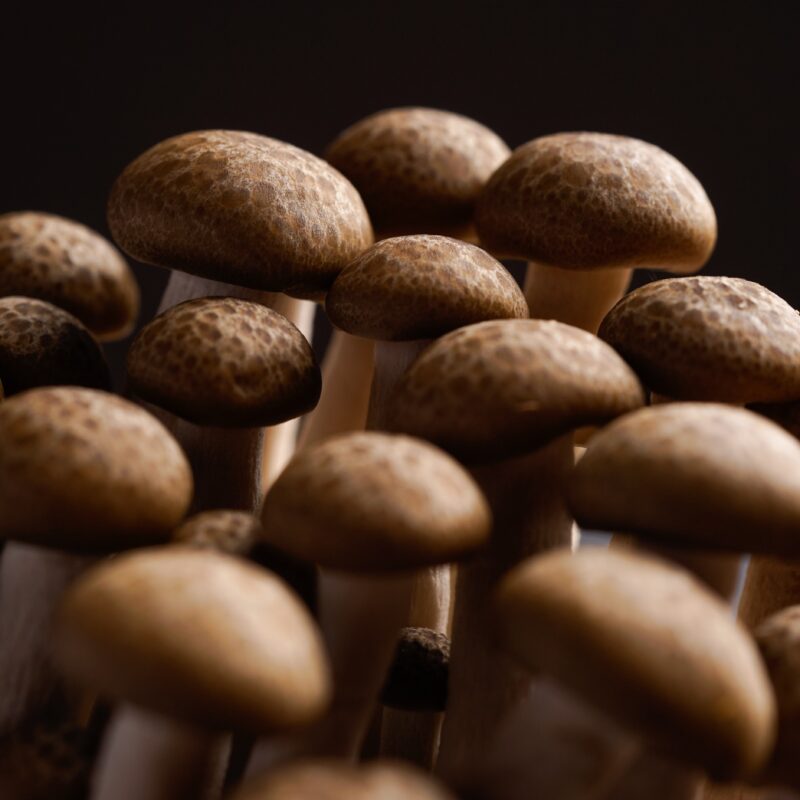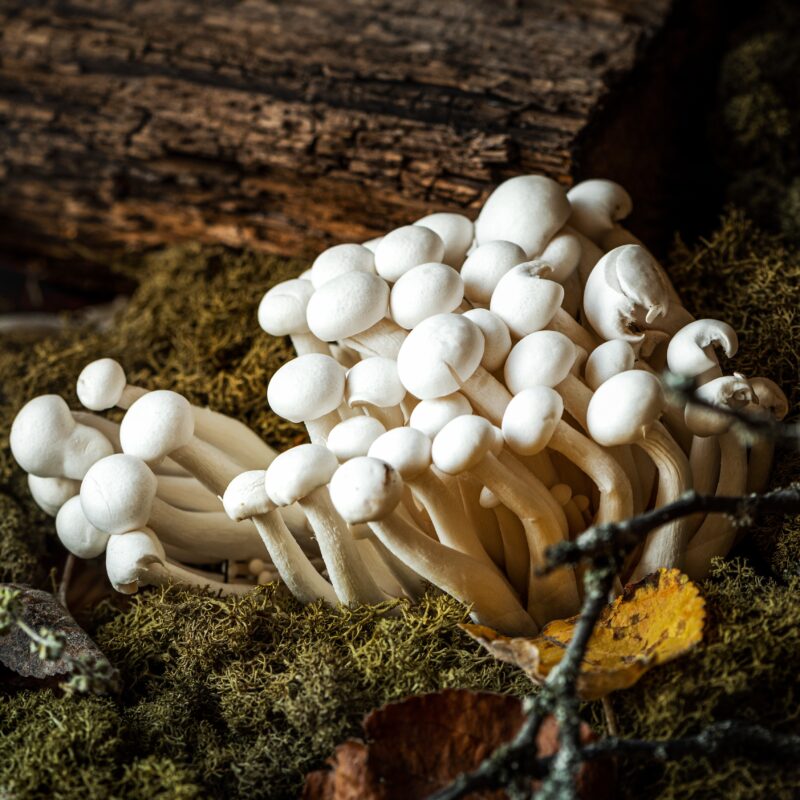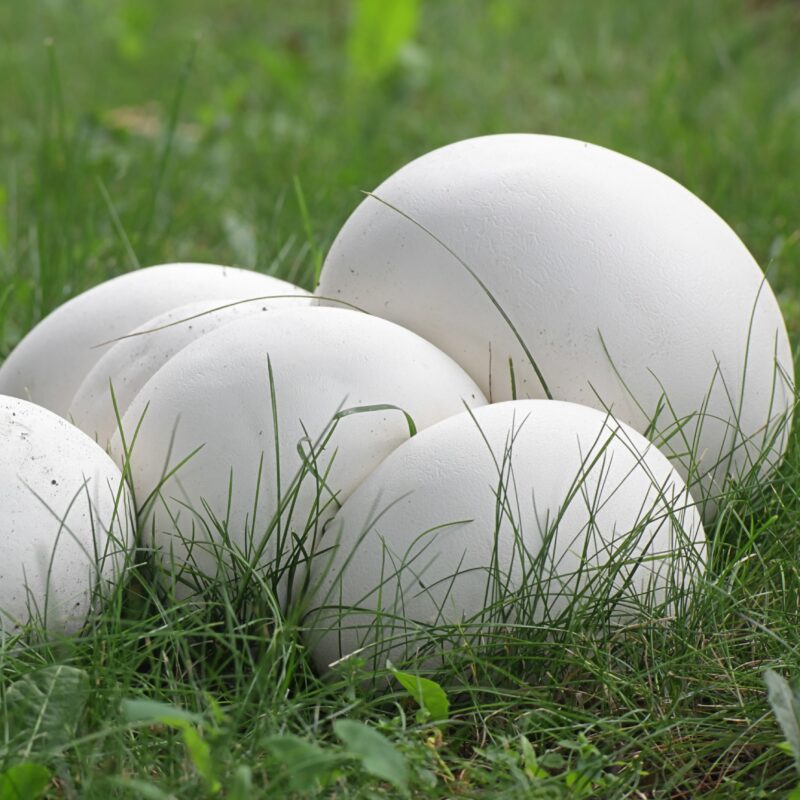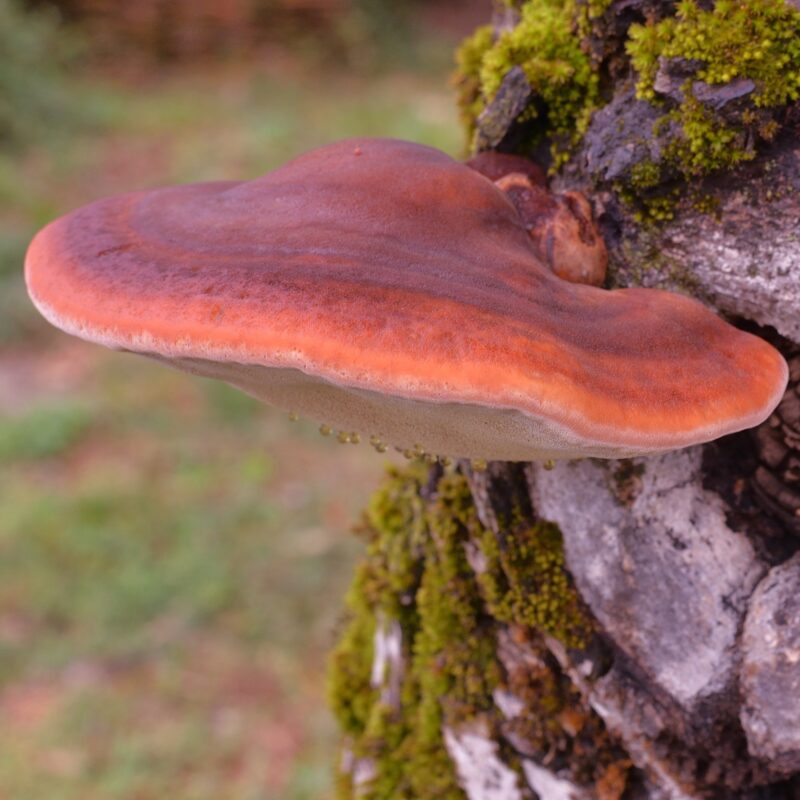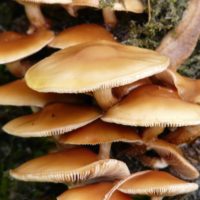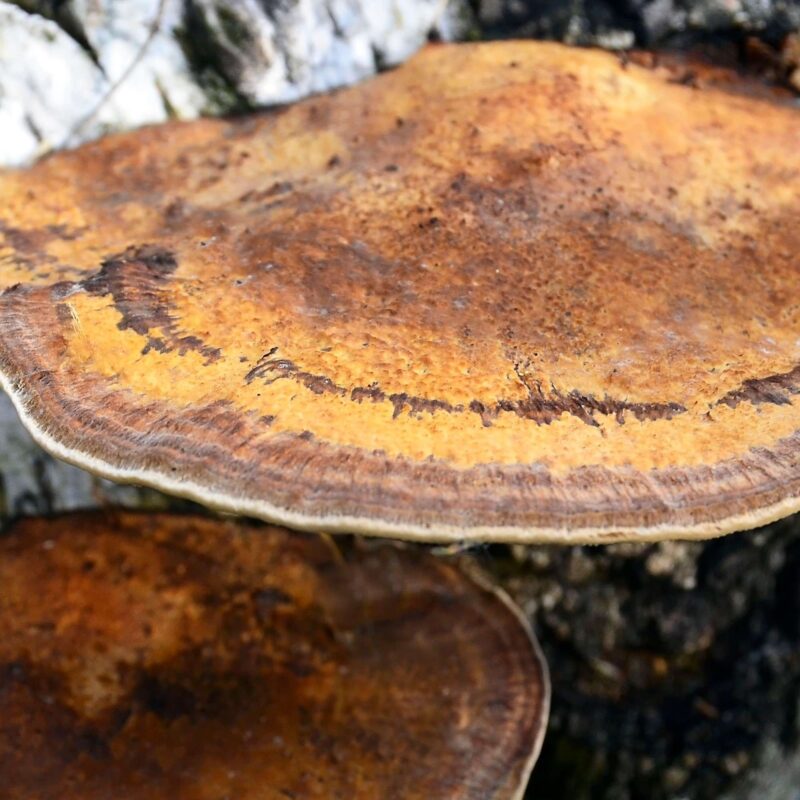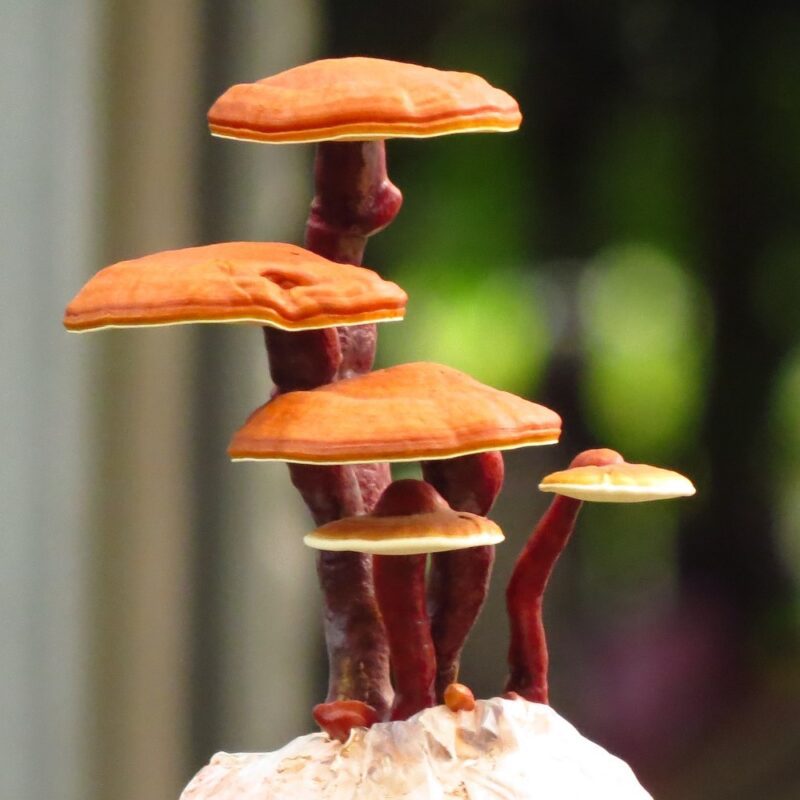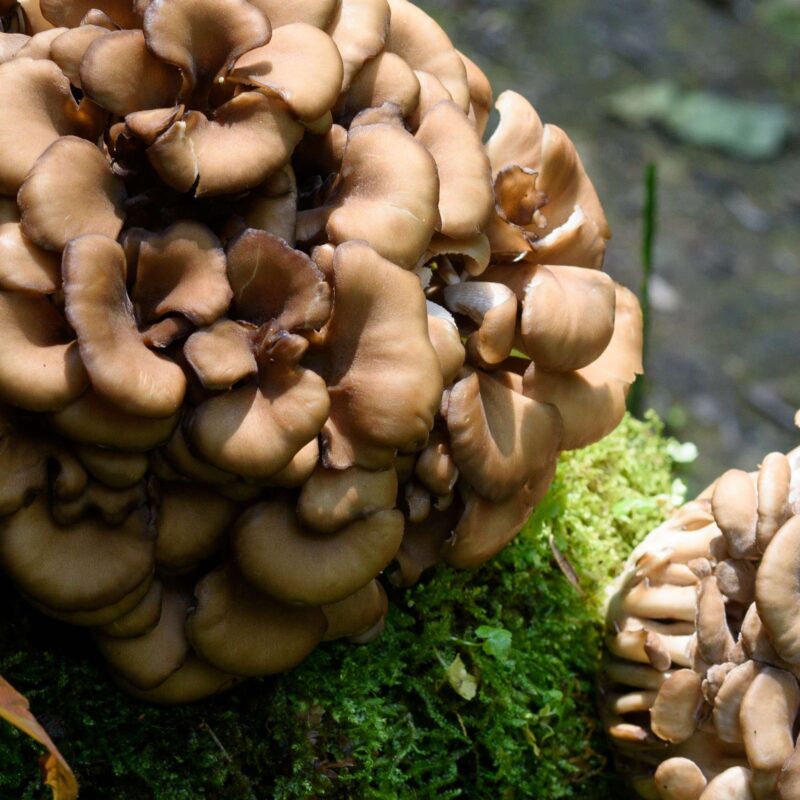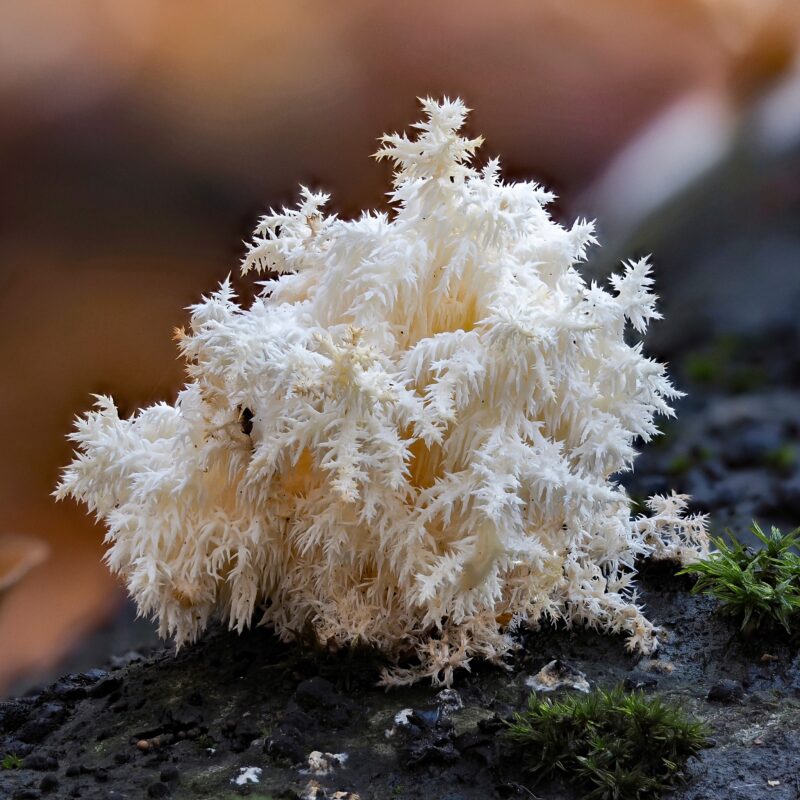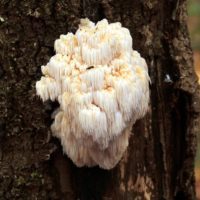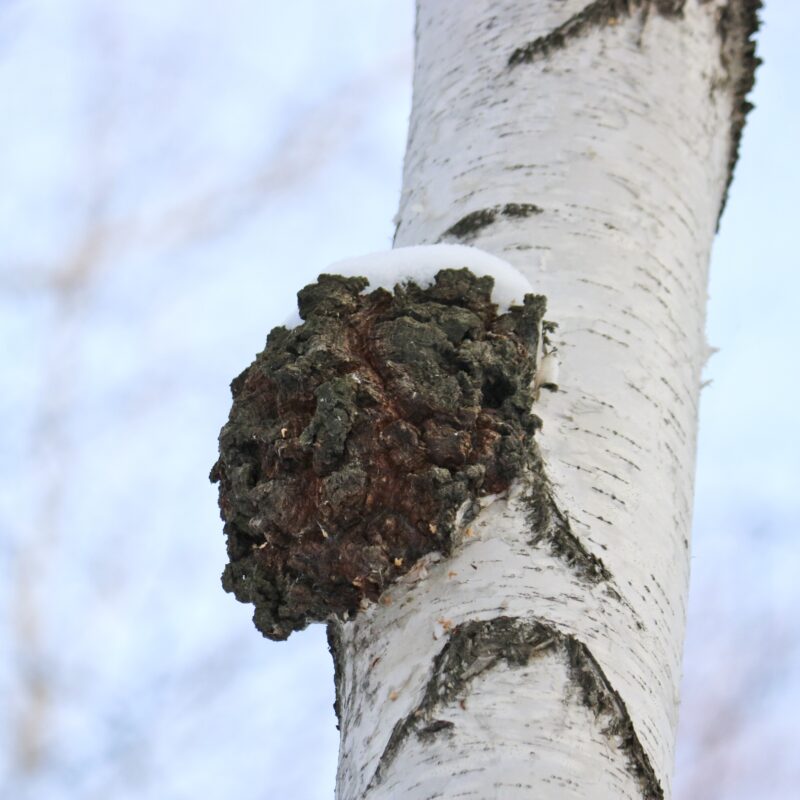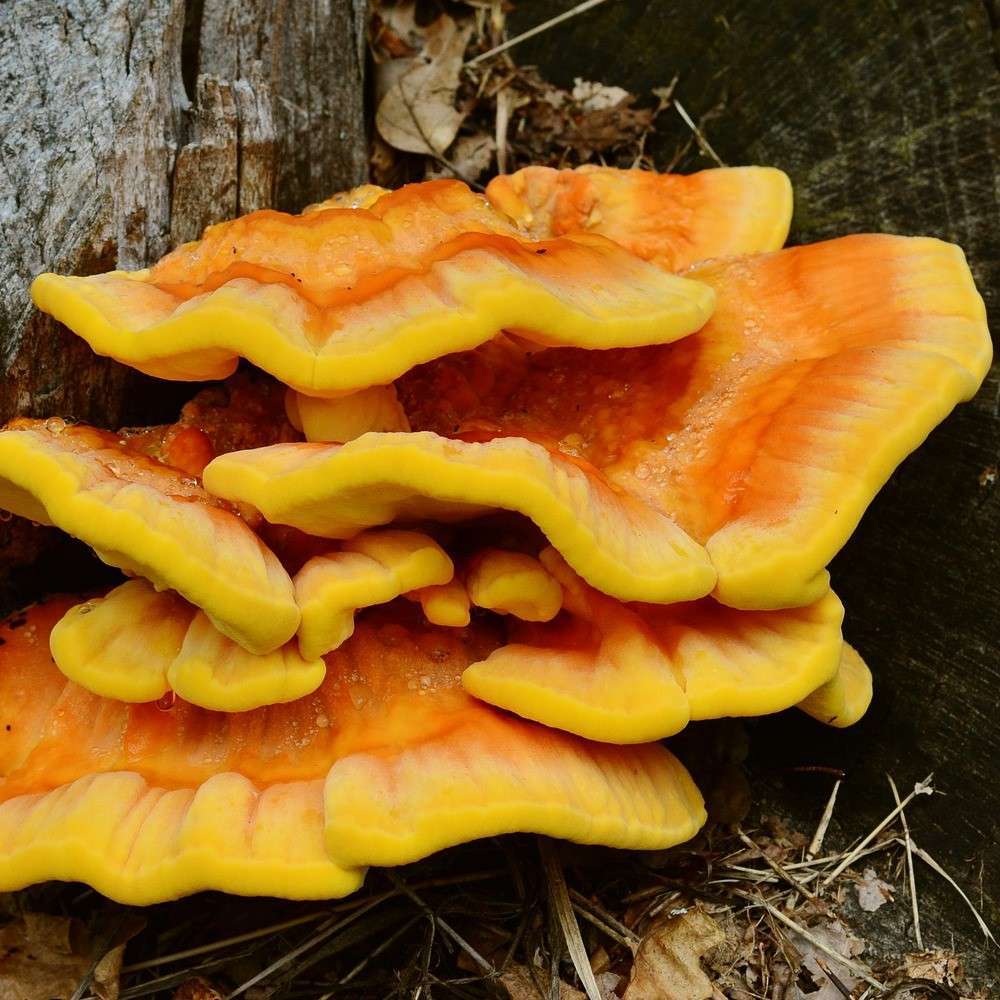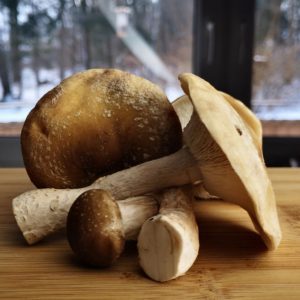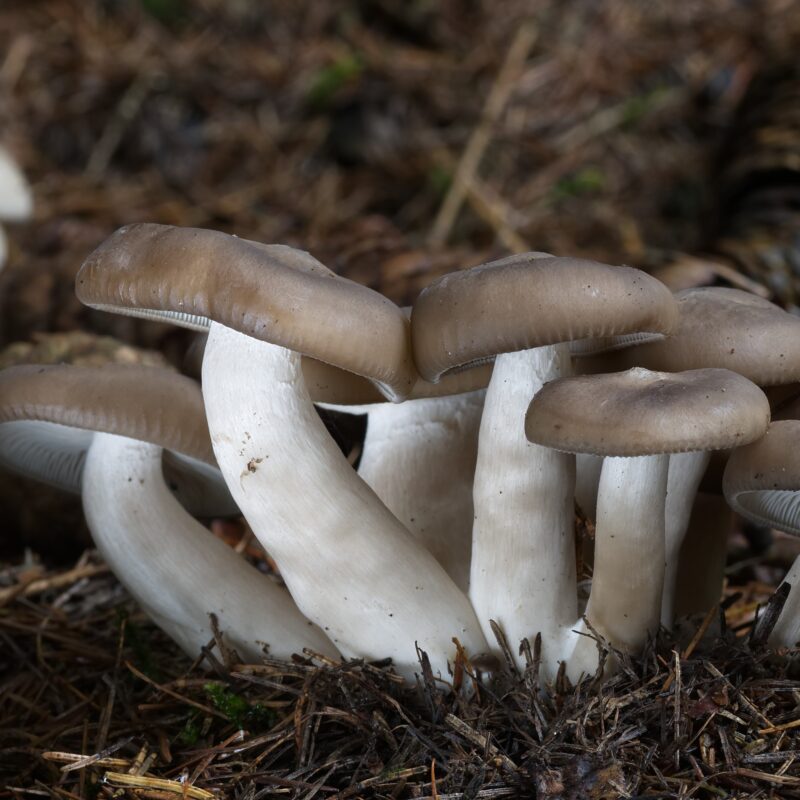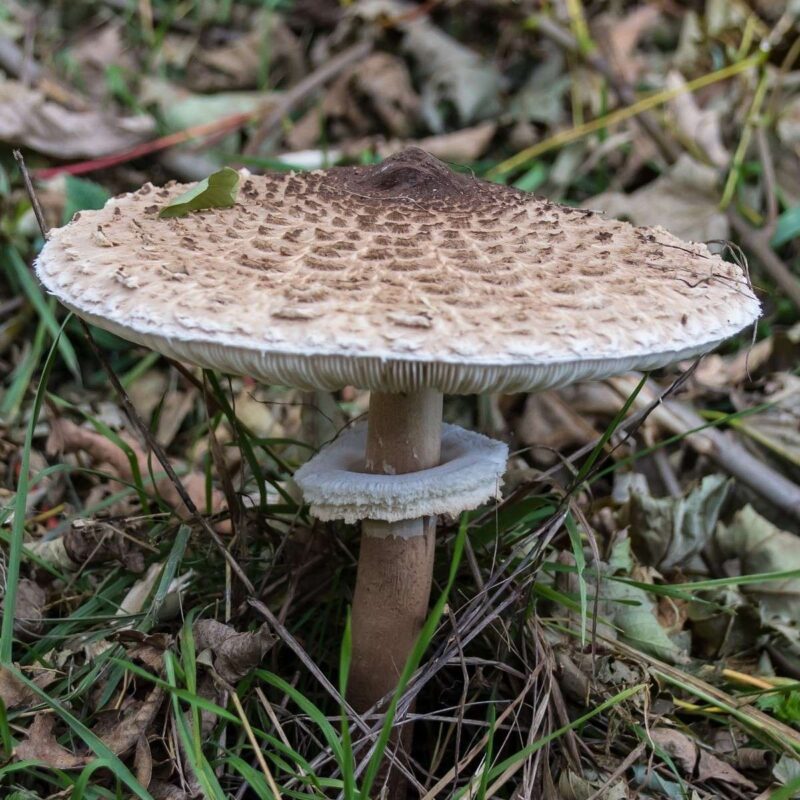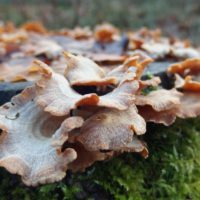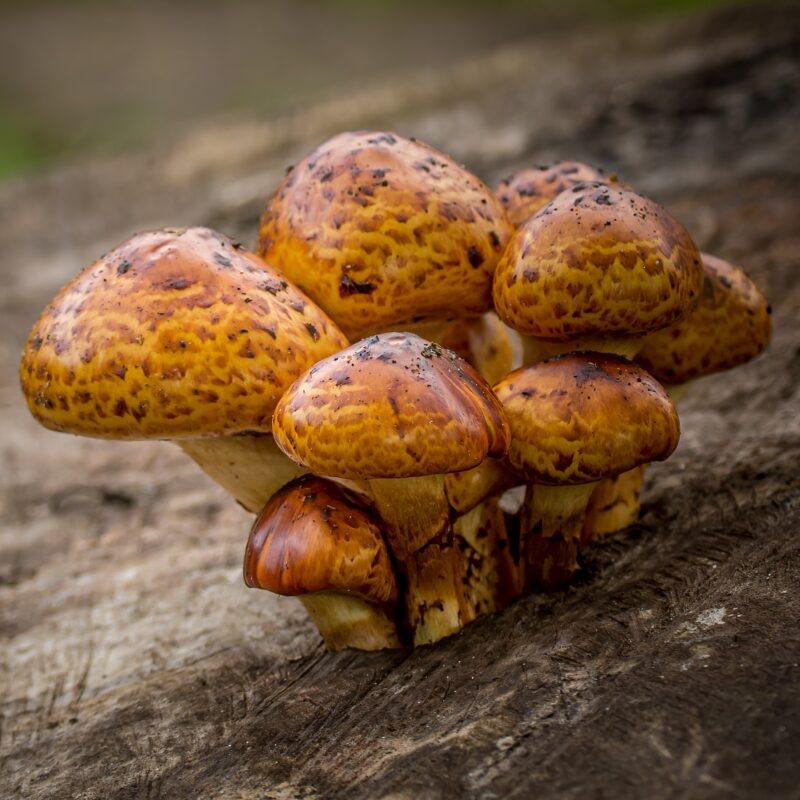Description
Properties
Ganoderma curtisii is a wood-decaying polypore whose distribution is primarily in the Southeastern United States.
This polypore bears a marked resemblance to G. lucidum and generally has a stipe, sometimes lacking the characteristic red to purple varnished appearance that G. lucidum possesses. The flesh is spongy in pore tissue and firm in the stipe. The pores bruise brown when damaged.
Ganoderma curtisii’s habitat of choice is decaying stumps and roots of hardwoods, which aligns perfectly with that of G. sessile.
The fruit bodies of reishi contain little water and therefore shrink only slightly during drying. Processing into tea, powder or tinctures requires mechanical comminution, which most simple coffee grinders, vegetable graters or food processors cannot provide. The texture of the dry fruiting bodies can be compared to the toughest cork. To obtain a powder from the mushroom is extremely difficult without industrial technology, even a granulate with 2-3 mm grain size requires a powerful motor rasp.
Ganoderma curtisiiis is valid as a medicinal mushroom in naturopathy or in traditional Chinese and Japanese medicine for:
-accompanying therapies, transplants and after cancer therapies
-for nervous weakness, stomach ulcers, hypertension, sleep disturbances, arthritis, allergies and, liver cirrhosis, cardiovascular problems, muscle diseases, dizziness, asthma, hepatitis A, B, C, obesity
-antifibrotic, anti-inflammatory
-preventive or concomitant chronic inflammatory diseases of the kidneys, stomach, spleen, liver, lungs and heart
The genetic proximity to the active ingredient-rich Reishis from the Far East is later
in the cup or in the extract. The distinct bitterness proves the proven high content of ganodermic acid, which other North American or European species cannot show.
1. Growing
Affiliate Partner
Growing Procedure
Ganoderma curtisii well at temperatures from 20°C and benefits from even warmer climates up to 27°C. Beautiful results are obtained by allowing the mushroom to fruit through the filter of the cultivation container to obtain only a single fruiting body. Breaking away unwanted fruit set also results in single large mushrooms. However, a pinset designed for high yield consists of 5-6 fruiting sets. This cultivar makes straight antlers with few branches under CO²-heavy conditions.
Dark incubation at 22°-25°C, duration about 14-21 days. A short ripening period in slightly cooler conditions is advisable, but not mandatory. Fruiting then at 20°-27°C and initially high (92-95% RLf), but later only moderate moisture levels around 80-85%. Stem cultivars with this species are not frost-resistant and must be brought indoors during cold periods.
Golden reishi often hatches as quickly as most Asian species and does not require an overlong maturation period. The species benefits from a substrate “beefed up” with aggregates. My standard porling substrate works just fine…. Top- or side-fruiting are possible, depending on whether you want to produce antlers (top-fruiting) or hats (side-fruiting). As with almost all Ganoderma species, the production of hats is linked to the provision of sufficient fresh air and extensive lighting. You produce antlers rather in CO²-heavy atmosphere or in the closed bag with (weaker) punctual light.
Growing
Agar Culture Media: MEA, MYA, PDYA
Cropping Cycle: 1-2 crops 90-120 days apart
Containers for fruiting: Wood logs, indoor mycelium bags for cultivation in a greenhouse, mushroom bed / patch
Biological efficiencies: –
Substrates: Hardwood (most suitable: beech, oak, alder, birch)
Growing Characteristics
-the surface is damp and shiny, the thin, soft, light yellow resin layer melts with fire
-mostly a subsequent decomposer but occasionally also a dangerous parasite of weakness in living trees, white rot trigger
S
|
P
|
F
|
|
|---|---|---|---|
Temp °C |
21-27 | 18-27 | 21-27 |
Relative Humidity % |
95-100 | 95-100 | 90-95 |
Duration d |
10-20 | 14-28 | 60 |
CO2 ppm |
>5000 | Antler formation: >10,000 ppm Conk formation: <2000 ppm |
Antler formation: >10,000 ppm Conk formation: <2000 ppm |
FAE per h |
0-1 | 4-8 (Conk) | 4-8 (Conk) |
Light lux |
– | Antler formation: <500 lux for 4-8h Conk formation: 500-1000 lux for 12h |
750-1500 lux for 12h/day |
Natural Habitat
A species found only in the Americas. Yellow Reishi remains white for a long time when properly cultivated and later turns yellow-orange, but not red or purple.
its preferred habitat are rotting tree stumps and roots of hardwoods, which perfectly match those of G. sessile
2. Identification
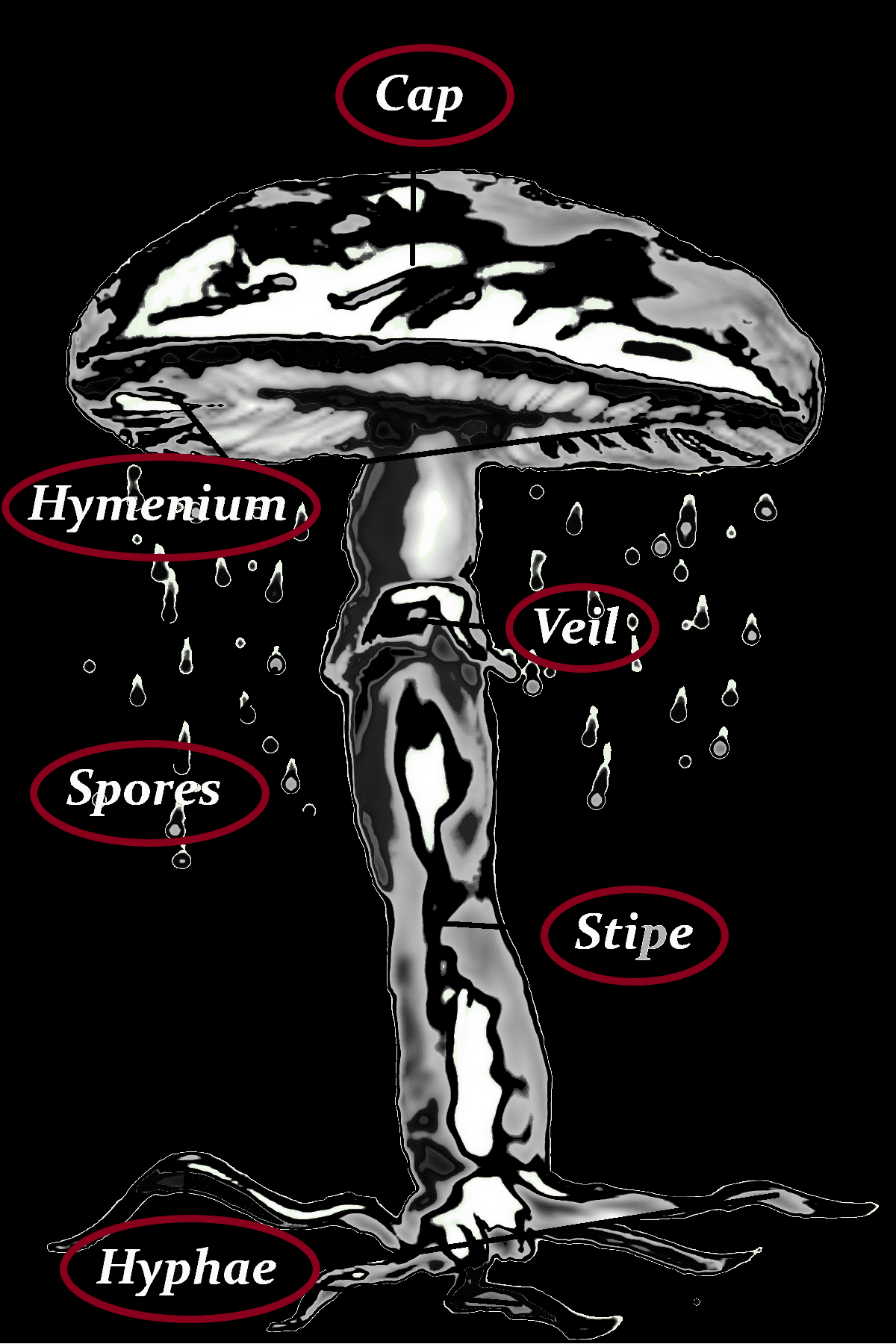
Cap
-3–12 cm Ø
-staggered, more or less semicircular in outline or irregularly kidney-shaped
-at a young age yellow, white and red divided into zones that mature into a red, brownish-red or reddish-brown whole
-surface with lacquered outer crust, with or without some paler (orange to whitish) zones in the edge area
-bald
Stipe
-bald
-lacquered
-at an angle(45–90 degrees) to the cap
-brown-red to red-brown, sometimes the characteristic red to purple lacquered appearance that G. lucidum possesses is missing
-usually present
Veil
–
Hymenium
-pores, decurrent or subdecurrent
-bruise brown when damaged
-4–5 tiny, circular pores per mm; tubes 0.5–2 cm deep
Hyphae
-trimetric
-cicular, smooth to slimy
-generative and sketal hyphae
-clamp connections present
Spores
-brown
-9–11.5 x 5.5–7 µm including the hyaline vesicular appendix
-more or less ellipsoid, with a truncated end
Danger of confusion
Ganoderma pfeifferi, Ganoderma carnosum, Ganoderma applanatum, Ganoderma lucidum
3. Consuming
Gourmet
There are many ways for Gannoderma species to get delivered into the human body. Some are higher quality but a little pricey. On the flip side, there are more affordable but lower quality options. There is even organic Gannoderma products out on the market. A few of these include Reishi tea, spore powder capsule, spore oil soft gel capsule, and coffee with Ganoderma curtisii extract.
Smell
not distinctive
Taste
not distinctive
Flesh
-spongy in the pore tissue and firm in the stem,
-tough but not woody, pale brown (but darker just above the tubes); with melanoid bands but without concentric growth zones.
Nutritional content per 100g
|
Bioactive Compounds
|
|
| Triterpenoids | |
| Ganoderic acids, lucidumol, lucialdehyde, lucidenic acids, ganodermic, ganolucidic acids, ganoderals, ganoderiols | Anticancer |
| Triterpenoids | Antidiabetic |
| Ganoderic acids T-Q and lucideinic acids A, D2, E2, and P |
Anti-inflammatory
|
| Triterpenes | Antioxidant |
| Ganoderic acids, ganodermin, ganoderic acid A, ganodermadiol, ganodermanondiol, lucidumol B, ganodermanontriol, ganoderic acid B, ganolucidic acid B | Antimicrobial |
| Triterpenoids, ganoderic acid, ganoderiol F, ganodermanontriol | Antiviral |
| Polysaccharides | |
| 1→3, 1→4, and 1→6-linked β and α-D (or L)-glucans, GLP-2B | Anticancer |
| Polysaccharides | Antidiabetic |
| Polysaccharides | Antioxidant |
| Polysaccharides | Antimicrobial |
| Polysaccharides (ganopoly) |
Cardiovascular problems
|
|
Proteins, Glycoproteins, and Peptidoglycans
|
|
| Glycopeptides and peptidoglycans | Anticancer |
| Protein Ling Zhi-8 (LZ-8), lectin, ribosome-inactivating proteins, antimicrobial proteins, glycopeptides/ glycoproteins, peptidoglycans/ proteoglycans, ganodermin A, ribonucleases, proteinases, metalloproteases, laccases |
Immunomodulatory, anticancer, and antitumor
|
| Proteoglycans, proteins (LZ-8) | Antidiabetic |
| Polysaccharide–peptide complex | Antioxidant |
|
Phenolic compounds
|
|
| Phenolic components, phenolic extracts | Antioxidant |
| Saponins |
Anticancer and antioxidant
|
| Sterols; e.g., ergosterol | Provitamin D2 |
| Long-chain fatty acids | Antitumor |
| Moisture | 48% |
| pH value | 5.6 |
| Energy (kcal) | 240 |
| Water-soluble proteins % | 19% |
| Total lipids | 3.00% |
| Reducing sugars | 4.4% |
| Nonreducing sugars | 1% |
| Total sugars | 05.04.2022% |
| Minerals | |
| Potassium | 430mg |
| Phosphorus | 225mg |
| Sulfur | 130mg |
| Magnesium | 8mg |
| Sodium | 2.8mg |
| Calcium | 1.9mg |
| Copper | 26mg |
| Manganese | 22mg |
| Iron | 2.22mg |
| Zinc | 0.7mg |
| Thiamine (B1) | 3.5mg |
| Riboflavin (B2) | 17mg |
| Niacin (B3) | 62mg |
| Pyridoxine (B6) | 0.7mg |
| Ascorbic acid | 32mg |
4. Data
other names
Polyporus curtisii, Fomes curtisii, Scindalma curtisii, Golden reishi, Yellow reishi
| Chinesisch (traditionell) | 弱澤靈芝 |
| Chinesisch (traditionell) | 黃金靈芝 |
| Chinesisch (vereinfacht) | 弱光泽灵芝 |
| Englisch | golden reishi |
| Spanisch |
Hongo dorado de repisa
|
| Wissenschaftl. Name |
Ganoderma curtisii
|
| Wissenschaftl. Name |
Ganoderma meredithae
|
| Wissenschaftl. Name |
Ganoderma meredithiae
|
| Wissenschaftl. Name |
Polyporus curtisii
|
| Kingdom | Fungi |
|---|
| Division Basidiomycota Class Agaricomycetes Order Polyporales Family Ganodermataceae Genus Ganoderma Species G. curtisii Ecology Saprotrophic |



